Christian
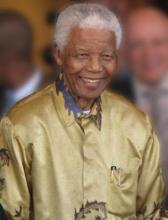
Nelson Mandela, the former South African president who died Thursday, had a deep connection with religious institutions.
Mandela was educated, first at Clarkebury and then at Healdtown, Methodist boarding schools that provided a Christian liberal arts education.
“Both were important influences on his life,” said Presiding Bishop Zipho Siwa of the Methodist Church of Southern Africa. “Indeed, after his time at Clarkebury, the young Mandela said his horizons had been broadened.”
In Cape Town, retired Anglican Archbishop Desmond Tutu said Mandela was mourned by South Africans, Africans, and the international community as a colossus of unimpeachable moral character and integrity.
“He preached a gospel of forgiveness and reconciliation,” Tutu wrote in a tribute on Allafrica.com.
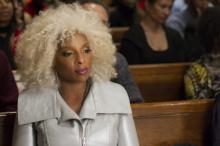
In her book “The Funny Thing Is …,” Ellen DeGeneres describes being invited to God’s house for wine and cheese. When the Almighty walks into the room, Degeneres describes God this way:
“I would say she was about 47, 48 years old, a beautiful, beautiful black woman. And we just immediately hugged.”
When I think about the guardian angels who I’ve been told surround me like spiritual body guards, I picture the Angel In Charge as looking and sounding a lot like the Grammy-winning singer Mary J. Blige.
How appropriate, then, that Blige portrays a character in the upcoming holiday film, Black Nativity, (based in part on the Langston Hughes play) who appears to be an angelic being with a huge platinum-blonde Afro, dressed head-to-toe in silver-colored leather.

In November of 1963, C. S. “Jack” Lewis knew he was dying. The Irish-born literary scholar, children’s author, and Christian apologist had come out of a coma in July, only to be diagnosed with end-stage renal failure. He retired from his post at Cambridge University, choosing to die at home in the Kilns, where he lived with his brother, Major Warren (“Warnie”) Lewis.
On Friday, Nov. 22, he retired to his bedroom after lunch. At 4:30 p.m. GMT he took some tea. An hour and a half later, Warnie heard a crash and discovered Jack unconscious. Within three or four minutes, he was dead, exactly one week shy of his 65th birthday.
A few minutes later (11:39 a.m. CST), Air Force One touched down at Love Field in Dallas, Texas, as a motorcade prepared to take President John F. Kennedy and his wife Jacqueline, along with their entourage, to the Dallas Business and Trade Mart. But the motorcade never arrived at its destination.
After the president suffered mortal gunshot wounds to the head at 12:30 p.m., his limousine rerouted to Parkland Memorial Hospital where the 46-year-old president was dead upon arrival.

Amid concerns about police brutality, Brazilian military police officers are taking Bible study classes during their working hours to help them deal with stress and improve their personal and family lives.
The initiative teaches officers how to apply biblical concepts to everyday family matters and encourages them to search for biblical examples that give advice, guidance, and solutions about family issues, including how to rear children, handle finances, and build personal relationships.
The Moral Education Program was launched as a three-month pilot project in the capital Brasilia by the Federal District Military Police in partnership with the Sao Paulo-based University of the Family. More than 150 officers applied to join the project but only 70 have been selected to attend the two-hour weekly sessions because of limited space.
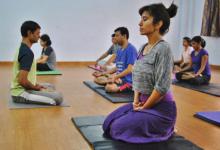
The Supreme Court of India is weighing whether yoga has a religious element, as it decides if public schools may teach the ancient discipline in the country where it originated.
India’s school policy considers yoga an integral component of physical education. But the court has expressed caution, and is considering arguments that yoga has a religious component. The issue is complicated because India is a secular democracy but has pockets of Hindu nationals who would like to force their way of life on others.
“Can we be asking all the schools to have one period for yoga classes every day when certain minority institutions may have reservations against it?” the court asked Oct. 18, referring to Christian and Muslim groups.

On Oct. 13, Asian Americans United published an open letter asking the church to reevaluate its behavior toward its Asian brothers and sisters. The letter demands that the evangelical community listen and respect a community that has generally been overlooked or disregarded. Central to this issue is identity.
When we begin to divide or alienate communities through our behavior based on race, we are additionally dividing the identity of Christ. However, if we return to the core of what being Christian entails, we are reminded that we are not our own and find a new calling to community.
With whom do you identify? In a nation, with over 75 percent of its population nominally claiming the label Christian, asking whom we identify with is an important question. It is a challenge but a daily necessity to reflect on our character and ask if we are truly representing Christ.
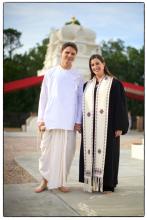
Growing up Baptist, J. Dana Trent heard plenty of warnings about interfaith romance.
Marrying the wrong person — known as being “unequally yoked” — could ruin your faith and your marriage.
But three years after marrying a former Hindu monk, Trent says she’s a better Christian than ever.
“I had become complacent in my Christianity,” said Trent, an ordained Baptist minister. “Now my religion and spirituality have become much more integrated in my life.”
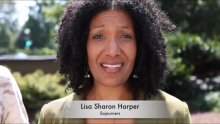
Sojourners supports the National Religious Campaign Against Torture (NRCAT). NRCAT recently released five Youtube videos to counter the claims found in pop-culture that torture is acceptable. Check out this video of people of faith speaking to core faith values that underlie their anti-torture work,, which features Sojourners' Lisa Sharon Harper.

What was supposed to be a touchy-feely, one-on-one interview by Oprah Winfrey with long-distance swimmer Diana Nyad has morphed into a broader, sometimes angry exchange about what it means to be an atheist.
Earlier this month Winfrey, 59, hosted Nyad on “Super Soul Sunday,” her weekly talk program on cable’s Oprah Winfrey Network. Nyad, 64, recently completed a 53-hour solo swim from Cuba to Florida.
During the hourlong segment, Nyad declared herself an atheist.
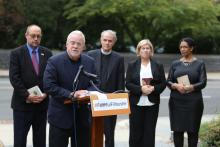
Under a cloudy and drizzly sky, across the street from the U.S. Capitol, David Beckmann read passages from the prophet Isaiah.
“Comfort, comfort my people, says your God,” read Beckmann, president of Bread for the World and one of several Protestant and Catholic leaders who gathered Wednesday to launch “Faithful Filibuster.”
The effort is intended to remind members of Congress that the government shutdown is hurting poor and vulnerable people.
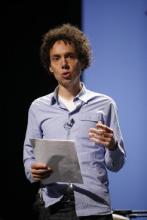
Author Malcolm Gladwell may not be known for writing on religion. His New York Times best-selling books “The Tipping Point,” “Outliers,” “Blink” and “What the Dog Saw” deal with the unexpected twists in social science research. But his newest book, “David and Goliath: Underdogs, Misfits, and the Art of Battling Giants,” also includes underlying faith-related themes, and not just in the title.
Gladwell said that while researching the book, he began rediscovering his own faith after having drifted away. Here, he speaks with RNS about his Mennonite family, how Jesus perfectly illustrates the point in his new book and how Gladwell’s return to faith changed the way he wrote the book.

At an interfaith summer camp in northern New Jersey, two dozen children explored a swamp to learn how creatures depend on safe water.
In Southern California, a Unitarian Universalist congregation installed a dry well so water from its church rooftops drains into underground pipes to replenish the water table.
In Vermont, members of a Lutheran church removed cars and appliances that had been dumped in a nearby stream and restored its banks with local willows and oaks.
Across the country, water has become more than a ritual element used in Christian baptismal rites or in Jewish and Muslim cleansing ceremonies. It has become a focus for worshippers seeking to go beyond water’s ritual symbolism and think more deeply about their relationship to this life-giving resource.
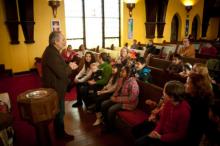
As Congress makes a final attempt this fall to act on comprehensive immigration reform, the debate is focusing on “securing” our borders and offering a path to citizenship to the 11 million residents here without proper documentation. These politicized arguments, however, don’t see the forest for the trees.
We’re not viewing the broader impact that immigration has had on American society, especially since the last major immigration reform of the 1960s. In particular, we’re missing the way immigration is transforming the religious life of North America.
We commonly view immigration as introducing large numbers of non-Christian religions into U.S. society. True, because of immigration in the last half century, America has become the most religiously diverse country in the world, with thousands of mosques and temples dotting our religious landscape.

Upon my recent return from the Middle East (with The Global Immersion Project), I was struck more than ever before at our Western infatuation around military aggression, violence, and division. Not only are these the primary narratives we are fed through our major media outlets, they are the narratives we subconsciously embrace through the latest bestseller, box office hit, or video game. Violence, death, and division have become normative. We are becoming numb to the very things that we – as ambassadors of hope and reconciliation – are to turn from as Resurrection People. It is as though there is a stranglehold on our on our ability to see and participate in the stories of healing and new life.
As surprising as this may be, embedded in the midst of these conflicts are endless stories of hope that never make the latest headline or sound bite. And in the times I've followed Jesus INTO these places of conflict, I continue to encounter stories of peace and hope that embody the Gospel message, stories by real people, happening right now, in places usually known only for conflict, violence, and death.

Lots of people claim to be “following Jesus” and then they do stuff like this. Sure, people who follow Jesus do these things all the time, but you can't say you are doing them because you are trying to follow Jesus' example.
(Clearly, this is not a complete list but it's a good place to start).
10) Exclude people because they practice another religion.
Jesus was constantly including people, and he did it with a radical disregard for their religion. We do not have a single recorded incident of Jesus asking for a person's religious affiliation before being willing to speak with them or break bread with them. We do have several records of Jesus seeking out those who happen to practice faith differently from him. There was even this one time when he used a hated Samaritan as an example of how we are supposed to take care of each other.

On a recent Monday evening, a room inside Christ Community Church was transformed into a coffeehouse with fresh-brewed coffee, plenty of popped kettle corn and the thorny subject of racism on the table.
For an hour, about 20 people gathered around tables, shared personal experiences about racism, watched a short documentary and answered questions meant to stimulate conversation.
The event is called Lifetree Cafe, and it’s a new evangelical tool gaining popularity with churches reaching out to potential members.
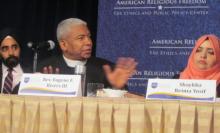
In a conference full of people who champion traditional religious values, Amardeep Singh knew that everyone might not appreciate his recounting of the “uncomfortable” cab ride he had taken the previous day.
Singh, a featured speaker at the second annual National Religious Freedom Conference in Washington on Thursday, told the several hundred attendees that his D.C. taxi driver had the radio tuned to a religiously minded commentator, who was explaining that women become lesbians because they had been abused.
His cab story — both his telling and the reaction to it — reveals fault lines in the coalition of Americans concerned that government and popular culture are eroding religious freedom and trying to banish religion from the public sphere.
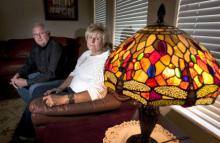
DRAPER, Utah — As young brothers, Kris, and Kourt McGuire often spent hours chasing the shimmering dragonflies that floated above a lush, green pasture behind their house.
One day, when their mom told them to come inside to clean their room, they silently obeyed — or so she thought. After a time, she went to check on the two youngest of her four sons. She found their bedroom alive with dragonflies, which they had tied with strings hung from the ceiling.
She smiled, and they all broke into laughter.
It’s one of Lyn McGuire’s favorite recollections of the two boys — a memory that predates the heartache of losing them both.
Kris died at age 8 in 1986, when a car hit him on the way to school. Kourt died about 10 years later, at age 17, killing himself amid depression and the still-stinging absence of his older brother.

NEW YORK — I sat with my gospel choir colleagues, in a pew, while the host choir at Park Avenue Synagogue rehearsed a lovely Psalm setting in Hebrew.
Some sang the Hebrew text with ease, some with difficulty — a reminder that faith generally means learning a language other than one’s own.
After the synagogue choir sang in their other-language, we joined them to sing in our other-language: swaying to the beat, getting one’s body into the praise. They responded gladly, as our combined choirs rehearsed Richard Smallwood’s epic “Total Praise,” a setting of Psalm 121, which Christians and Jews share.
When two choirs from Park Avenue Christian Church and two choirs from Park Avenue Synagogue, plus some jazz musicians, performed Sunday, at a Psalms festival, we disrupted 2,000 years of animus between Christians and Jews. In the eyes of the creator God who made us all, we said, we are more alike than different, more connected than separated, more eager for shared faith than for separate and superior faith.
Rose Marie Berger writes in the May 2013 Sojourners magazine cover story, “For God So Loved the World,” that people of faith are key to reversing climate change. It will take a holy power shift to compel God’s people to care for creation and “launch an irresistible force for change.”
In creative and bold ways, people of faith from various religious traditions are doing just that. Together, they are raising their voices and taking action to address climate change.